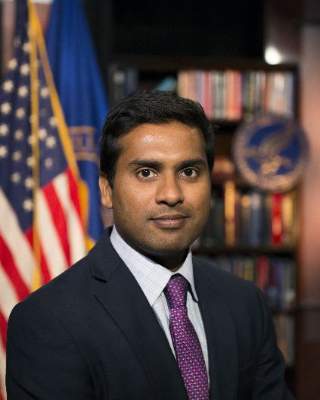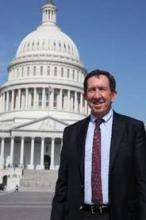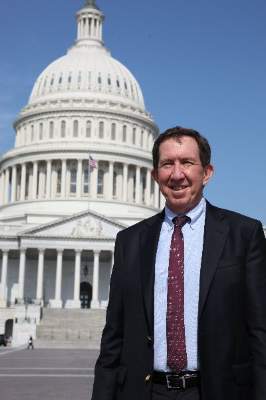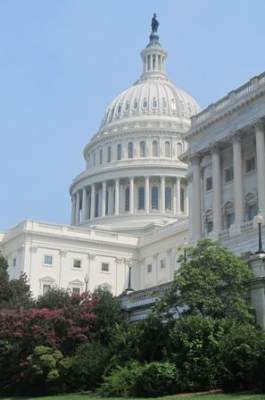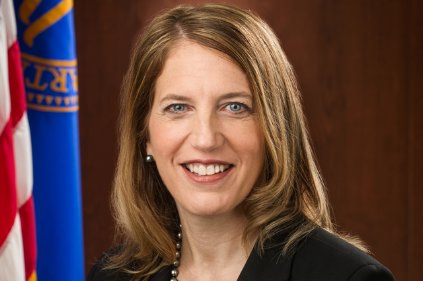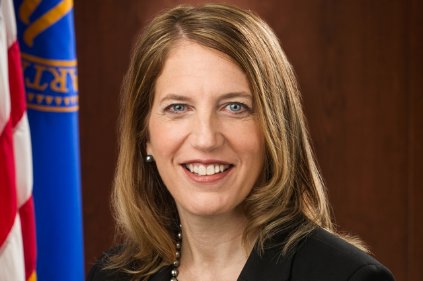User login
CMS releases data on $3.5B in industry payments to doctors, teaching hospitals
The federal government publicly released the first data about drug and device industry payments to physicians and hospitals, part of a push toward greater transparency that was mandated under the Affordable Care Act.
On Sept. 30, the Centers for Medicare & Medicaid Services published 4.4 million records of payments to about 546,000 individual physicians and nearly 1,360 teaching hospitals. In total, the records represent $3.5 billion in financial transactions between industry and health care providers.
The Open Payments program, known previously as the Sunshine Act, requires medical device manufacturers and pharmaceutical companies to report payments and transfers of value to physicians and teaching hospitals, including consulting fees, research grants, travel reimbursements, ownership interests, and other gifts.
The data released on Sept. 30 cover only payments made from August through December 2013. Data on payments made in 2014 are slated to be published in June 2015.
“We are taking a big step forward in shining the light on these financial arrangements between physicians and the health care industry,” said Dr. Shantanu Agrawal, director of the CMS Center for Program Integrity. “Using [these] new data, it is now possible to conduct a wide range of analyses of payments made by drug and device manufacturers that were never possible before.”
But the program has been plagued by delays and technical problems. CMS had to extend multiple times the 45-day “review and dispute” period, during which physicians could check the accuracy of data reported about them. It took the agency days to correct technical problems that had caused data to be intermingled, matching the wrong records to physicians with similar names.
Of the 4.4 million records released on Sept. 30, about 40% had to be deidentified either because of data inconsistencies that kept CMS from being able to match them to an individual physician or teaching hospital, or because the data were not available for review for the full 45-day period. CMS expects the data to be fully identified in 2015 once the manufacturers submit corrected information.
Another 199,000 records that were reported to the agency were not published at all, according to CMS. The vast majority of those records were unpublished at the request of the industry, since they related to ongoing research of unapproved treatments. About 9,000 records were not published because they are under active dispute, according to Dr. Agrawal.
While physicians and the industry have been generally supportive of CMS’s move toward greater openness about payments, there has been plenty of criticism of the implementation of the Open Payments program. The American Medical Association has said repeatedly that physicians have not had enough time to review the accuracy of the payments and that CMS is not providing adequate context about what the payments actually say about physician-industry relationships.
“Publicly reporting industry payments to individual physicians can imply, wrongly, that such payments are always inappropriate,” the AMA wrote in a guide for reporters covering the release of Open Payments data. “Some may be, but to be able to make an informed judgment, it is vital to be able to set the financial information in context. Just because a physician has a relationship with industry does not automatically mean that his or her professional judgment has been influenced inappropriately.”
The AMA also said that the process of registering and later reviewing payments was confusing and overly cumbersome for physicians. Only about 26,000 physicians and 400 teaching hospitals registered in the Open Payments system to review their data, according to CMS.
mschneider@frontlinemedcom.com
On Twitter @maryellenny
The federal government publicly released the first data about drug and device industry payments to physicians and hospitals, part of a push toward greater transparency that was mandated under the Affordable Care Act.
On Sept. 30, the Centers for Medicare & Medicaid Services published 4.4 million records of payments to about 546,000 individual physicians and nearly 1,360 teaching hospitals. In total, the records represent $3.5 billion in financial transactions between industry and health care providers.
The Open Payments program, known previously as the Sunshine Act, requires medical device manufacturers and pharmaceutical companies to report payments and transfers of value to physicians and teaching hospitals, including consulting fees, research grants, travel reimbursements, ownership interests, and other gifts.
The data released on Sept. 30 cover only payments made from August through December 2013. Data on payments made in 2014 are slated to be published in June 2015.
“We are taking a big step forward in shining the light on these financial arrangements between physicians and the health care industry,” said Dr. Shantanu Agrawal, director of the CMS Center for Program Integrity. “Using [these] new data, it is now possible to conduct a wide range of analyses of payments made by drug and device manufacturers that were never possible before.”
But the program has been plagued by delays and technical problems. CMS had to extend multiple times the 45-day “review and dispute” period, during which physicians could check the accuracy of data reported about them. It took the agency days to correct technical problems that had caused data to be intermingled, matching the wrong records to physicians with similar names.
Of the 4.4 million records released on Sept. 30, about 40% had to be deidentified either because of data inconsistencies that kept CMS from being able to match them to an individual physician or teaching hospital, or because the data were not available for review for the full 45-day period. CMS expects the data to be fully identified in 2015 once the manufacturers submit corrected information.
Another 199,000 records that were reported to the agency were not published at all, according to CMS. The vast majority of those records were unpublished at the request of the industry, since they related to ongoing research of unapproved treatments. About 9,000 records were not published because they are under active dispute, according to Dr. Agrawal.
While physicians and the industry have been generally supportive of CMS’s move toward greater openness about payments, there has been plenty of criticism of the implementation of the Open Payments program. The American Medical Association has said repeatedly that physicians have not had enough time to review the accuracy of the payments and that CMS is not providing adequate context about what the payments actually say about physician-industry relationships.
“Publicly reporting industry payments to individual physicians can imply, wrongly, that such payments are always inappropriate,” the AMA wrote in a guide for reporters covering the release of Open Payments data. “Some may be, but to be able to make an informed judgment, it is vital to be able to set the financial information in context. Just because a physician has a relationship with industry does not automatically mean that his or her professional judgment has been influenced inappropriately.”
The AMA also said that the process of registering and later reviewing payments was confusing and overly cumbersome for physicians. Only about 26,000 physicians and 400 teaching hospitals registered in the Open Payments system to review their data, according to CMS.
mschneider@frontlinemedcom.com
On Twitter @maryellenny
The federal government publicly released the first data about drug and device industry payments to physicians and hospitals, part of a push toward greater transparency that was mandated under the Affordable Care Act.
On Sept. 30, the Centers for Medicare & Medicaid Services published 4.4 million records of payments to about 546,000 individual physicians and nearly 1,360 teaching hospitals. In total, the records represent $3.5 billion in financial transactions between industry and health care providers.
The Open Payments program, known previously as the Sunshine Act, requires medical device manufacturers and pharmaceutical companies to report payments and transfers of value to physicians and teaching hospitals, including consulting fees, research grants, travel reimbursements, ownership interests, and other gifts.
The data released on Sept. 30 cover only payments made from August through December 2013. Data on payments made in 2014 are slated to be published in June 2015.
“We are taking a big step forward in shining the light on these financial arrangements between physicians and the health care industry,” said Dr. Shantanu Agrawal, director of the CMS Center for Program Integrity. “Using [these] new data, it is now possible to conduct a wide range of analyses of payments made by drug and device manufacturers that were never possible before.”
But the program has been plagued by delays and technical problems. CMS had to extend multiple times the 45-day “review and dispute” period, during which physicians could check the accuracy of data reported about them. It took the agency days to correct technical problems that had caused data to be intermingled, matching the wrong records to physicians with similar names.
Of the 4.4 million records released on Sept. 30, about 40% had to be deidentified either because of data inconsistencies that kept CMS from being able to match them to an individual physician or teaching hospital, or because the data were not available for review for the full 45-day period. CMS expects the data to be fully identified in 2015 once the manufacturers submit corrected information.
Another 199,000 records that were reported to the agency were not published at all, according to CMS. The vast majority of those records were unpublished at the request of the industry, since they related to ongoing research of unapproved treatments. About 9,000 records were not published because they are under active dispute, according to Dr. Agrawal.
While physicians and the industry have been generally supportive of CMS’s move toward greater openness about payments, there has been plenty of criticism of the implementation of the Open Payments program. The American Medical Association has said repeatedly that physicians have not had enough time to review the accuracy of the payments and that CMS is not providing adequate context about what the payments actually say about physician-industry relationships.
“Publicly reporting industry payments to individual physicians can imply, wrongly, that such payments are always inappropriate,” the AMA wrote in a guide for reporters covering the release of Open Payments data. “Some may be, but to be able to make an informed judgment, it is vital to be able to set the financial information in context. Just because a physician has a relationship with industry does not automatically mean that his or her professional judgment has been influenced inappropriately.”
The AMA also said that the process of registering and later reviewing payments was confusing and overly cumbersome for physicians. Only about 26,000 physicians and 400 teaching hospitals registered in the Open Payments system to review their data, according to CMS.
mschneider@frontlinemedcom.com
On Twitter @maryellenny
HHS: ACA drops uncompensated hospital care by $5.7B
Hospitals are projected to save $5.7 billion in 2014 because of a drop in uncompensated care, in large part due to the expansion of Medicaid, according to an analysis by the Department of Health & Human Services.
Hospitals are also benefiting from the growth in private coverage obtained through the Affordable Care Act marketplaces. Overall, hospitals are expected to see a 16% drop in uncompensated care, compared with original projections for the year.
Medicaid, however, is the biggest driver in the savings for hospitals. In states that have expanded eligibility for Medicaid, hospitals could save as much as $4.2 billion, nearly three-quarters of the national savings projected. To date, 27 states plus the District of Columbia have expanded Medicaid, according to HHS.
The American Hospital Association seized on the HHS report as a chance to call on more states to expand their Medicaid eligibility under the ACA.
“The ACA is accomplishing its objective in some, but not all states,” said Marie Watteau, an AHA spokeswoman. “Today’s report offers a limited estimate of the level of uncompensated care. As the report states, it’s too early to know what the impact will be on a national level. Our members are counting on uncompensated care reductions and we continue to support the expansion of coverage.”
The decline in uncompensated care was anticipated with the increased insurance coverage under the ACA. As a result, the health law cuts hospital payments that have traditionally been used to offset uncompensated care costs. For instance, federal Medicaid Disproportionate Share Hospital (DSH) payments are scheduled to be cut $1.2 billion in fiscal year 2016 and a total of $17.6 billion by fiscal year 2020.
The HHS estimates are based in part on hospital cost reports from 2011 and 2012. The HHS defined uncompensated care as the combination of charity care to uninsured patients and costs from non-Medicare bad debt.
mschneider@frontlinemedcom.com
On Twitter @maryellenny
Hospitals are projected to save $5.7 billion in 2014 because of a drop in uncompensated care, in large part due to the expansion of Medicaid, according to an analysis by the Department of Health & Human Services.
Hospitals are also benefiting from the growth in private coverage obtained through the Affordable Care Act marketplaces. Overall, hospitals are expected to see a 16% drop in uncompensated care, compared with original projections for the year.
Medicaid, however, is the biggest driver in the savings for hospitals. In states that have expanded eligibility for Medicaid, hospitals could save as much as $4.2 billion, nearly three-quarters of the national savings projected. To date, 27 states plus the District of Columbia have expanded Medicaid, according to HHS.
The American Hospital Association seized on the HHS report as a chance to call on more states to expand their Medicaid eligibility under the ACA.
“The ACA is accomplishing its objective in some, but not all states,” said Marie Watteau, an AHA spokeswoman. “Today’s report offers a limited estimate of the level of uncompensated care. As the report states, it’s too early to know what the impact will be on a national level. Our members are counting on uncompensated care reductions and we continue to support the expansion of coverage.”
The decline in uncompensated care was anticipated with the increased insurance coverage under the ACA. As a result, the health law cuts hospital payments that have traditionally been used to offset uncompensated care costs. For instance, federal Medicaid Disproportionate Share Hospital (DSH) payments are scheduled to be cut $1.2 billion in fiscal year 2016 and a total of $17.6 billion by fiscal year 2020.
The HHS estimates are based in part on hospital cost reports from 2011 and 2012. The HHS defined uncompensated care as the combination of charity care to uninsured patients and costs from non-Medicare bad debt.
mschneider@frontlinemedcom.com
On Twitter @maryellenny
Hospitals are projected to save $5.7 billion in 2014 because of a drop in uncompensated care, in large part due to the expansion of Medicaid, according to an analysis by the Department of Health & Human Services.
Hospitals are also benefiting from the growth in private coverage obtained through the Affordable Care Act marketplaces. Overall, hospitals are expected to see a 16% drop in uncompensated care, compared with original projections for the year.
Medicaid, however, is the biggest driver in the savings for hospitals. In states that have expanded eligibility for Medicaid, hospitals could save as much as $4.2 billion, nearly three-quarters of the national savings projected. To date, 27 states plus the District of Columbia have expanded Medicaid, according to HHS.
The American Hospital Association seized on the HHS report as a chance to call on more states to expand their Medicaid eligibility under the ACA.
“The ACA is accomplishing its objective in some, but not all states,” said Marie Watteau, an AHA spokeswoman. “Today’s report offers a limited estimate of the level of uncompensated care. As the report states, it’s too early to know what the impact will be on a national level. Our members are counting on uncompensated care reductions and we continue to support the expansion of coverage.”
The decline in uncompensated care was anticipated with the increased insurance coverage under the ACA. As a result, the health law cuts hospital payments that have traditionally been used to offset uncompensated care costs. For instance, federal Medicaid Disproportionate Share Hospital (DSH) payments are scheduled to be cut $1.2 billion in fiscal year 2016 and a total of $17.6 billion by fiscal year 2020.
The HHS estimates are based in part on hospital cost reports from 2011 and 2012. The HHS defined uncompensated care as the combination of charity care to uninsured patients and costs from non-Medicare bad debt.
mschneider@frontlinemedcom.com
On Twitter @maryellenny
Docs step up lobbying to extend Medicaid pay bump
If Congress fails to act, primary care physicians across the country will see on average a 41% cut in their Medicaid payments for certain primary care services as an Affordable Care Act provision expires Dec. 31.
As a result, some physicians plan to limit the number of Medicaid patients they see, while others will drop out of the program, according to a report released Sept. 23 by the American College of Physicians.
The Medicaid Primary Care Pay Parity Program – part of the ACA – raises traditionally low Medicaid payments to the same level as Medicare payments for certain primary care services. The program was designed to run 2 years.
Legislators have expressed interest in extending the higher payments. In July, Sen. Patty Murray (D-Wash.) and Sen. Sherrod Brown (D-Ohio) introduced the “Ensuring Access to Primary Care for Women & Children Act” (S. 2694). The bill would continue the Medicaid pay parity through 2016 and would increase the type of providers who are eligible for higher payments.
Under the new legislation, physicians in the specialties of family medicines, pediatrics, and internal medicine, as well as midlevel internal medicine and pediatric subspecialties such as gastroenterology, would continue to receive Medicare-level payments when they provide primary care and immunization services to Medicaid patients through 2016. The bill would extend eligibility for the payment increase for obstetricians and gynecologists, nurse midwives, nurse practitioners, and physician assistants.
But with the midterm elections just weeks away, Congress is in recess while lawmakers return to their districts to campaign. The next chance to pass legislation will come in mid-November during a lame-duck session of Congress.
Dr. Robert M. Centor, chair of the ACP’s Board of Regents, acknowledged that the timing will make it difficult to get legislation passed. But ACP plans to continue to work with lawmakers and congressional staff over the next several weeks because the consequences of inaction are high for both patients and physicians.
“Having the Medicaid pay parity has really helped Medicaid patients a great deal,” Dr. Centor said. “Our job is to make sure Congress understands that. If they understand that, I think we have a good chance.”
A survey conducted by the ACP in April shows that patient access could be affected if payments are cut. About 40% of 283 ACP members who responded to the survey and who had enrolled in the Pay Parity program said they would accept fewer Medicaid patients in 2015 if the cuts took effect. A small number – about 6% – said they would drop out of Medicaid completely next year if Congress does not act.
In the meantime, some states are taking action on their own to extend pay parity under Medicaid.
Six states (Alabama, Colorado, Iowa, Maryland, Mississippi, and New Mexico) are spending their own money to extend the Medicaid pay parity through 2015, according to the American Academy of Family Physicians. Connecticut is extending the pay bump through the end of June 2015 and Michigan will support Medicaid payments at 78% of Medicare rates.
But Dr. Centor said a state-by-state approach is complex and time consuming and that ACP wants to see action at the federal level.
mschneider@frontlinemedcom.com
On Twitter @maryellenny
If Congress fails to act, primary care physicians across the country will see on average a 41% cut in their Medicaid payments for certain primary care services as an Affordable Care Act provision expires Dec. 31.
As a result, some physicians plan to limit the number of Medicaid patients they see, while others will drop out of the program, according to a report released Sept. 23 by the American College of Physicians.
The Medicaid Primary Care Pay Parity Program – part of the ACA – raises traditionally low Medicaid payments to the same level as Medicare payments for certain primary care services. The program was designed to run 2 years.
Legislators have expressed interest in extending the higher payments. In July, Sen. Patty Murray (D-Wash.) and Sen. Sherrod Brown (D-Ohio) introduced the “Ensuring Access to Primary Care for Women & Children Act” (S. 2694). The bill would continue the Medicaid pay parity through 2016 and would increase the type of providers who are eligible for higher payments.
Under the new legislation, physicians in the specialties of family medicines, pediatrics, and internal medicine, as well as midlevel internal medicine and pediatric subspecialties such as gastroenterology, would continue to receive Medicare-level payments when they provide primary care and immunization services to Medicaid patients through 2016. The bill would extend eligibility for the payment increase for obstetricians and gynecologists, nurse midwives, nurse practitioners, and physician assistants.
But with the midterm elections just weeks away, Congress is in recess while lawmakers return to their districts to campaign. The next chance to pass legislation will come in mid-November during a lame-duck session of Congress.
Dr. Robert M. Centor, chair of the ACP’s Board of Regents, acknowledged that the timing will make it difficult to get legislation passed. But ACP plans to continue to work with lawmakers and congressional staff over the next several weeks because the consequences of inaction are high for both patients and physicians.
“Having the Medicaid pay parity has really helped Medicaid patients a great deal,” Dr. Centor said. “Our job is to make sure Congress understands that. If they understand that, I think we have a good chance.”
A survey conducted by the ACP in April shows that patient access could be affected if payments are cut. About 40% of 283 ACP members who responded to the survey and who had enrolled in the Pay Parity program said they would accept fewer Medicaid patients in 2015 if the cuts took effect. A small number – about 6% – said they would drop out of Medicaid completely next year if Congress does not act.
In the meantime, some states are taking action on their own to extend pay parity under Medicaid.
Six states (Alabama, Colorado, Iowa, Maryland, Mississippi, and New Mexico) are spending their own money to extend the Medicaid pay parity through 2015, according to the American Academy of Family Physicians. Connecticut is extending the pay bump through the end of June 2015 and Michigan will support Medicaid payments at 78% of Medicare rates.
But Dr. Centor said a state-by-state approach is complex and time consuming and that ACP wants to see action at the federal level.
mschneider@frontlinemedcom.com
On Twitter @maryellenny
If Congress fails to act, primary care physicians across the country will see on average a 41% cut in their Medicaid payments for certain primary care services as an Affordable Care Act provision expires Dec. 31.
As a result, some physicians plan to limit the number of Medicaid patients they see, while others will drop out of the program, according to a report released Sept. 23 by the American College of Physicians.
The Medicaid Primary Care Pay Parity Program – part of the ACA – raises traditionally low Medicaid payments to the same level as Medicare payments for certain primary care services. The program was designed to run 2 years.
Legislators have expressed interest in extending the higher payments. In July, Sen. Patty Murray (D-Wash.) and Sen. Sherrod Brown (D-Ohio) introduced the “Ensuring Access to Primary Care for Women & Children Act” (S. 2694). The bill would continue the Medicaid pay parity through 2016 and would increase the type of providers who are eligible for higher payments.
Under the new legislation, physicians in the specialties of family medicines, pediatrics, and internal medicine, as well as midlevel internal medicine and pediatric subspecialties such as gastroenterology, would continue to receive Medicare-level payments when they provide primary care and immunization services to Medicaid patients through 2016. The bill would extend eligibility for the payment increase for obstetricians and gynecologists, nurse midwives, nurse practitioners, and physician assistants.
But with the midterm elections just weeks away, Congress is in recess while lawmakers return to their districts to campaign. The next chance to pass legislation will come in mid-November during a lame-duck session of Congress.
Dr. Robert M. Centor, chair of the ACP’s Board of Regents, acknowledged that the timing will make it difficult to get legislation passed. But ACP plans to continue to work with lawmakers and congressional staff over the next several weeks because the consequences of inaction are high for both patients and physicians.
“Having the Medicaid pay parity has really helped Medicaid patients a great deal,” Dr. Centor said. “Our job is to make sure Congress understands that. If they understand that, I think we have a good chance.”
A survey conducted by the ACP in April shows that patient access could be affected if payments are cut. About 40% of 283 ACP members who responded to the survey and who had enrolled in the Pay Parity program said they would accept fewer Medicaid patients in 2015 if the cuts took effect. A small number – about 6% – said they would drop out of Medicaid completely next year if Congress does not act.
In the meantime, some states are taking action on their own to extend pay parity under Medicaid.
Six states (Alabama, Colorado, Iowa, Maryland, Mississippi, and New Mexico) are spending their own money to extend the Medicaid pay parity through 2015, according to the American Academy of Family Physicians. Connecticut is extending the pay bump through the end of June 2015 and Michigan will support Medicaid payments at 78% of Medicare rates.
But Dr. Centor said a state-by-state approach is complex and time consuming and that ACP wants to see action at the federal level.
mschneider@frontlinemedcom.com
On Twitter @maryellenny
AMA calls on vendors, feds to improve usability of EHRs
With more physicians reporting that electronic health records are more of a hindrance than a help, the American Medical Association is calling on vendors and federal health officials to make changes that will improve the usability of electronic systems.
The AMA released eight priorities for improving physician usability of EHRs. But Dr. Steven J. Stack, the AMA’s president-elect, said the most helpful first step would be for federal officials to add more flexibility to the so-called meaningful use program, which requires physicians to meet requirements for the clinical use of their EHRs, such as meeting benchmarks for electronic prescribing or communicating with patients via an online portal.
The AMA is asking the Centers for Medicare & Medicaid Services, which oversees the meaningful use program, to lower the thresholds for earning incentives and penalties. Currently, physicians must meet 100% of the meaningful use standards to earn the bonus payment and avoid a penalty. The AMA wants physicians to be able to avoid penalties by meeting half of the requirements.
“In its ongoing evolution, the meaningful use program itself, and the certification process associated with it, have become overly prescriptive, rigid, unreasonable, and have themselves become a barrier to the necessary innovation to allow these tools to be effectively deployed to support physicians in their work on behalf of patients,” Dr. Stack said during a Sept. 16 news conference to announce the new AMA framework.
But vendors also have a role to play, according to the AMA. Dr. Stack said that most currently available systems aren’t customized with displays for individual specialties, ask for too much data entry from physicians, and require excessive scrolling and clicking.
The AMA has set eight priorities for improving EHR usability, developed by an advisory committee of physicians, experts, researchers, and health IT executives. The priorities include:
• Enhancing physicians’ ability to provide high -quality patient care.
• Supporting team-based care.
• Promoting care coordination.
• Offering product modularity and configuration.
• Reducing cognitive workload.
• Promoting data liquidity by allowing data to be shared between different settings.
• Facilitating digital and mobile engagement.
• Expediting user input into produce design and postimplementation feedback.
“Doctors find that these tools have great promise and potential. They’re just very much not where they need to be in terms of helping us instead of interfering with us,” said Dr. Stack, who is an emergency physician in Lexington, Ky.
The AMA’s call to action comes in the midst of National Health IT week, which features a week of events with IT vendors, federal officials, health care providers, and other groups focused on advancing health through the use of electronic systems.
mschneider@frontlinemedcom.com
On Twitter @maryellenny
With more physicians reporting that electronic health records are more of a hindrance than a help, the American Medical Association is calling on vendors and federal health officials to make changes that will improve the usability of electronic systems.
The AMA released eight priorities for improving physician usability of EHRs. But Dr. Steven J. Stack, the AMA’s president-elect, said the most helpful first step would be for federal officials to add more flexibility to the so-called meaningful use program, which requires physicians to meet requirements for the clinical use of their EHRs, such as meeting benchmarks for electronic prescribing or communicating with patients via an online portal.
The AMA is asking the Centers for Medicare & Medicaid Services, which oversees the meaningful use program, to lower the thresholds for earning incentives and penalties. Currently, physicians must meet 100% of the meaningful use standards to earn the bonus payment and avoid a penalty. The AMA wants physicians to be able to avoid penalties by meeting half of the requirements.
“In its ongoing evolution, the meaningful use program itself, and the certification process associated with it, have become overly prescriptive, rigid, unreasonable, and have themselves become a barrier to the necessary innovation to allow these tools to be effectively deployed to support physicians in their work on behalf of patients,” Dr. Stack said during a Sept. 16 news conference to announce the new AMA framework.
But vendors also have a role to play, according to the AMA. Dr. Stack said that most currently available systems aren’t customized with displays for individual specialties, ask for too much data entry from physicians, and require excessive scrolling and clicking.
The AMA has set eight priorities for improving EHR usability, developed by an advisory committee of physicians, experts, researchers, and health IT executives. The priorities include:
• Enhancing physicians’ ability to provide high -quality patient care.
• Supporting team-based care.
• Promoting care coordination.
• Offering product modularity and configuration.
• Reducing cognitive workload.
• Promoting data liquidity by allowing data to be shared between different settings.
• Facilitating digital and mobile engagement.
• Expediting user input into produce design and postimplementation feedback.
“Doctors find that these tools have great promise and potential. They’re just very much not where they need to be in terms of helping us instead of interfering with us,” said Dr. Stack, who is an emergency physician in Lexington, Ky.
The AMA’s call to action comes in the midst of National Health IT week, which features a week of events with IT vendors, federal officials, health care providers, and other groups focused on advancing health through the use of electronic systems.
mschneider@frontlinemedcom.com
On Twitter @maryellenny
With more physicians reporting that electronic health records are more of a hindrance than a help, the American Medical Association is calling on vendors and federal health officials to make changes that will improve the usability of electronic systems.
The AMA released eight priorities for improving physician usability of EHRs. But Dr. Steven J. Stack, the AMA’s president-elect, said the most helpful first step would be for federal officials to add more flexibility to the so-called meaningful use program, which requires physicians to meet requirements for the clinical use of their EHRs, such as meeting benchmarks for electronic prescribing or communicating with patients via an online portal.
The AMA is asking the Centers for Medicare & Medicaid Services, which oversees the meaningful use program, to lower the thresholds for earning incentives and penalties. Currently, physicians must meet 100% of the meaningful use standards to earn the bonus payment and avoid a penalty. The AMA wants physicians to be able to avoid penalties by meeting half of the requirements.
“In its ongoing evolution, the meaningful use program itself, and the certification process associated with it, have become overly prescriptive, rigid, unreasonable, and have themselves become a barrier to the necessary innovation to allow these tools to be effectively deployed to support physicians in their work on behalf of patients,” Dr. Stack said during a Sept. 16 news conference to announce the new AMA framework.
But vendors also have a role to play, according to the AMA. Dr. Stack said that most currently available systems aren’t customized with displays for individual specialties, ask for too much data entry from physicians, and require excessive scrolling and clicking.
The AMA has set eight priorities for improving EHR usability, developed by an advisory committee of physicians, experts, researchers, and health IT executives. The priorities include:
• Enhancing physicians’ ability to provide high -quality patient care.
• Supporting team-based care.
• Promoting care coordination.
• Offering product modularity and configuration.
• Reducing cognitive workload.
• Promoting data liquidity by allowing data to be shared between different settings.
• Facilitating digital and mobile engagement.
• Expediting user input into produce design and postimplementation feedback.
“Doctors find that these tools have great promise and potential. They’re just very much not where they need to be in terms of helping us instead of interfering with us,” said Dr. Stack, who is an emergency physician in Lexington, Ky.
The AMA’s call to action comes in the midst of National Health IT week, which features a week of events with IT vendors, federal officials, health care providers, and other groups focused on advancing health through the use of electronic systems.
mschneider@frontlinemedcom.com
On Twitter @maryellenny
VIDEO: Congress examines observation status policies
Medicare rules surrounding payment for observation status aren’t well understood outside of hospital walls, but the topic has started to make its way to Capitol Hill.
As Medicare patients increasingly get hit with large outpatient bills for hospitals stays that they thought were covered as inpatient care, lawmakers are taking notice.
Over the summer, members of Congress held hearings looking at how Medicare’s payment rules are affecting patients’ pocketbooks and their quality of care. Dr. Ann M. Sheehy, a hospitalist who has researched the use of observation status, testified before the Senate Special Committee on Aging. Watch her full testimony online.
Medicare rules surrounding payment for observation status aren’t well understood outside of hospital walls, but the topic has started to make its way to Capitol Hill.
As Medicare patients increasingly get hit with large outpatient bills for hospitals stays that they thought were covered as inpatient care, lawmakers are taking notice.
Over the summer, members of Congress held hearings looking at how Medicare’s payment rules are affecting patients’ pocketbooks and their quality of care. Dr. Ann M. Sheehy, a hospitalist who has researched the use of observation status, testified before the Senate Special Committee on Aging. Watch her full testimony online.
Medicare rules surrounding payment for observation status aren’t well understood outside of hospital walls, but the topic has started to make its way to Capitol Hill.
As Medicare patients increasingly get hit with large outpatient bills for hospitals stays that they thought were covered as inpatient care, lawmakers are taking notice.
Over the summer, members of Congress held hearings looking at how Medicare’s payment rules are affecting patients’ pocketbooks and their quality of care. Dr. Ann M. Sheehy, a hospitalist who has researched the use of observation status, testified before the Senate Special Committee on Aging. Watch her full testimony online.
HHS Loosens Contraception Rules for Employers Who Object
Federal health officials are once again tweaking the Affordable Care Act’s contraception mandate, making it easier for employers to opt out of paying for birth control, while still providing a way for workers to get contraception for free.
In an interim final rule released by the Department of Health & Human Services on Aug. 22, nonprofit religious organizations, including Catholic hospitals, will no longer be required to notify their insurance companies that they have a religious objection to providing contraceptive services. Instead, they will notify officials at HHS in writing about their religious objection, and HHS and the U.S. Department of Labor will notify insurers and third-party administrators.
Employees will then receive separate coverage for contraceptive services with no cost to the employee or employer, according to HHS.
The change seeks to address objections from nonprofit religious employers who said the previous workaround still made them a party to providing contraceptives and therefore violated their religious beliefs.
The government is also looking to extend the revised opt-out process to closely held for-profit companies who have religious objections to providing birth control coverage, such as the Hobby Lobby Stores, which recently won an exemption from the contraception mandate from the U.S. Supreme Court.
Under a proposed rule also released on Aug. 22, HHS outlined a procedure that would require third-party insurers to take on the cost of contraception coverage in cases where a closely held for-profit employer had a religious objection.
"Women across the country deserve access to recommended preventive services that are important to their health, no matter where they work," Sylvia M. Burwell, HHS Secretary, said in a statement. "Today’s announcement reinforces our commitment to providing women with access to coverage for contraception, while respecting religious considerations raised by nonprofit organizations and closely held for-profit companies."
But the newest regulatory changes were criticized by the United States Conference of Catholic Bishops, which is opposed to the ACA’s contraception mandate.
"We note with disappointment that the regulations would not broaden the ‘religious employer’ exemption to encompass all employers with sincerely held religious objections to the mandate. Instead, the regulations would only modify the ‘accommodation,’ under which the mandate still applies and still requires provision of the objectionable coverage," Archbishop Joseph E. Kurtz, president of the United States Conference of Catholic Bishops, said in a statement.
And by extending the changes to closely held for-profit employers that were exempted by the recent Hobby Lobby Supreme Court decision, the HHS proposal actually reduces the "scope of religious freedom," Archbishop Kurtz said.
mschneider@frontlinemedcom.com
On Twitter @maryellenny
Federal health officials are once again tweaking the Affordable Care Act’s contraception mandate, making it easier for employers to opt out of paying for birth control, while still providing a way for workers to get contraception for free.
In an interim final rule released by the Department of Health & Human Services on Aug. 22, nonprofit religious organizations, including Catholic hospitals, will no longer be required to notify their insurance companies that they have a religious objection to providing contraceptive services. Instead, they will notify officials at HHS in writing about their religious objection, and HHS and the U.S. Department of Labor will notify insurers and third-party administrators.
Employees will then receive separate coverage for contraceptive services with no cost to the employee or employer, according to HHS.
The change seeks to address objections from nonprofit religious employers who said the previous workaround still made them a party to providing contraceptives and therefore violated their religious beliefs.
The government is also looking to extend the revised opt-out process to closely held for-profit companies who have religious objections to providing birth control coverage, such as the Hobby Lobby Stores, which recently won an exemption from the contraception mandate from the U.S. Supreme Court.
Under a proposed rule also released on Aug. 22, HHS outlined a procedure that would require third-party insurers to take on the cost of contraception coverage in cases where a closely held for-profit employer had a religious objection.
"Women across the country deserve access to recommended preventive services that are important to their health, no matter where they work," Sylvia M. Burwell, HHS Secretary, said in a statement. "Today’s announcement reinforces our commitment to providing women with access to coverage for contraception, while respecting religious considerations raised by nonprofit organizations and closely held for-profit companies."
But the newest regulatory changes were criticized by the United States Conference of Catholic Bishops, which is opposed to the ACA’s contraception mandate.
"We note with disappointment that the regulations would not broaden the ‘religious employer’ exemption to encompass all employers with sincerely held religious objections to the mandate. Instead, the regulations would only modify the ‘accommodation,’ under which the mandate still applies and still requires provision of the objectionable coverage," Archbishop Joseph E. Kurtz, president of the United States Conference of Catholic Bishops, said in a statement.
And by extending the changes to closely held for-profit employers that were exempted by the recent Hobby Lobby Supreme Court decision, the HHS proposal actually reduces the "scope of religious freedom," Archbishop Kurtz said.
mschneider@frontlinemedcom.com
On Twitter @maryellenny
Federal health officials are once again tweaking the Affordable Care Act’s contraception mandate, making it easier for employers to opt out of paying for birth control, while still providing a way for workers to get contraception for free.
In an interim final rule released by the Department of Health & Human Services on Aug. 22, nonprofit religious organizations, including Catholic hospitals, will no longer be required to notify their insurance companies that they have a religious objection to providing contraceptive services. Instead, they will notify officials at HHS in writing about their religious objection, and HHS and the U.S. Department of Labor will notify insurers and third-party administrators.
Employees will then receive separate coverage for contraceptive services with no cost to the employee or employer, according to HHS.
The change seeks to address objections from nonprofit religious employers who said the previous workaround still made them a party to providing contraceptives and therefore violated their religious beliefs.
The government is also looking to extend the revised opt-out process to closely held for-profit companies who have religious objections to providing birth control coverage, such as the Hobby Lobby Stores, which recently won an exemption from the contraception mandate from the U.S. Supreme Court.
Under a proposed rule also released on Aug. 22, HHS outlined a procedure that would require third-party insurers to take on the cost of contraception coverage in cases where a closely held for-profit employer had a religious objection.
"Women across the country deserve access to recommended preventive services that are important to their health, no matter where they work," Sylvia M. Burwell, HHS Secretary, said in a statement. "Today’s announcement reinforces our commitment to providing women with access to coverage for contraception, while respecting religious considerations raised by nonprofit organizations and closely held for-profit companies."
But the newest regulatory changes were criticized by the United States Conference of Catholic Bishops, which is opposed to the ACA’s contraception mandate.
"We note with disappointment that the regulations would not broaden the ‘religious employer’ exemption to encompass all employers with sincerely held religious objections to the mandate. Instead, the regulations would only modify the ‘accommodation,’ under which the mandate still applies and still requires provision of the objectionable coverage," Archbishop Joseph E. Kurtz, president of the United States Conference of Catholic Bishops, said in a statement.
And by extending the changes to closely held for-profit employers that were exempted by the recent Hobby Lobby Supreme Court decision, the HHS proposal actually reduces the "scope of religious freedom," Archbishop Kurtz said.
mschneider@frontlinemedcom.com
On Twitter @maryellenny
Obama gets do-over in ACA subsidy lawsuit
The Obama administration is getting a second chance to show that providing tax subsidies through the Affordable Care Act’s federally run insurance marketplace is legal.
On Sept. 4, the District of Columbia Circuit of the U.S. Court of Appeals granted the government’s petition for a rehearing en banc in Halbig v. Burwell. The rehearing will be heard by all 17 judges on the court and the previous ruling made by a three-judge panel of the court has been vacated.
The earlier ruling, issued on July 22, was 2-1 in favor of the plaintiffs and, had it been upheld, had the potential to strip insurance subsidies from about 5 million Americans who had purchased health plans through the federally run marketplace.
Also on July 22, the 4th Circuit of the U.S. Court of Appeals in Virginia handed down a conflicting ruling, siding unanimously with the government in a similar case, King v. Burwell. The King plaintiffs have already appealed to the Supreme Court, but the high court has not indicated whether it will consider the case.
At issue is whether the federal government has the authority to issue tax subsidies to consumers from 36 states who purchase insurance on the federal marketplace since the ACA specifies only that subsidies would be available on the state-run marketplaces. The plaintiffs have argued that the administration is overstepping its authority by also offering subsidies on the federal marketplace. But administration officials maintain that Congress intended the subsidies to be offered to all eligible consumers regardless of who operates the marketplace.
The D.C. appellate court will hear oral arguments in Halbig v. Burwell on Dec. 17.
mschneider@frontlinemedcom.com
On Twitter @maryellenny
The Obama administration is getting a second chance to show that providing tax subsidies through the Affordable Care Act’s federally run insurance marketplace is legal.
On Sept. 4, the District of Columbia Circuit of the U.S. Court of Appeals granted the government’s petition for a rehearing en banc in Halbig v. Burwell. The rehearing will be heard by all 17 judges on the court and the previous ruling made by a three-judge panel of the court has been vacated.
The earlier ruling, issued on July 22, was 2-1 in favor of the plaintiffs and, had it been upheld, had the potential to strip insurance subsidies from about 5 million Americans who had purchased health plans through the federally run marketplace.
Also on July 22, the 4th Circuit of the U.S. Court of Appeals in Virginia handed down a conflicting ruling, siding unanimously with the government in a similar case, King v. Burwell. The King plaintiffs have already appealed to the Supreme Court, but the high court has not indicated whether it will consider the case.
At issue is whether the federal government has the authority to issue tax subsidies to consumers from 36 states who purchase insurance on the federal marketplace since the ACA specifies only that subsidies would be available on the state-run marketplaces. The plaintiffs have argued that the administration is overstepping its authority by also offering subsidies on the federal marketplace. But administration officials maintain that Congress intended the subsidies to be offered to all eligible consumers regardless of who operates the marketplace.
The D.C. appellate court will hear oral arguments in Halbig v. Burwell on Dec. 17.
mschneider@frontlinemedcom.com
On Twitter @maryellenny
The Obama administration is getting a second chance to show that providing tax subsidies through the Affordable Care Act’s federally run insurance marketplace is legal.
On Sept. 4, the District of Columbia Circuit of the U.S. Court of Appeals granted the government’s petition for a rehearing en banc in Halbig v. Burwell. The rehearing will be heard by all 17 judges on the court and the previous ruling made by a three-judge panel of the court has been vacated.
The earlier ruling, issued on July 22, was 2-1 in favor of the plaintiffs and, had it been upheld, had the potential to strip insurance subsidies from about 5 million Americans who had purchased health plans through the federally run marketplace.
Also on July 22, the 4th Circuit of the U.S. Court of Appeals in Virginia handed down a conflicting ruling, siding unanimously with the government in a similar case, King v. Burwell. The King plaintiffs have already appealed to the Supreme Court, but the high court has not indicated whether it will consider the case.
At issue is whether the federal government has the authority to issue tax subsidies to consumers from 36 states who purchase insurance on the federal marketplace since the ACA specifies only that subsidies would be available on the state-run marketplaces. The plaintiffs have argued that the administration is overstepping its authority by also offering subsidies on the federal marketplace. But administration officials maintain that Congress intended the subsidies to be offered to all eligible consumers regardless of who operates the marketplace.
The D.C. appellate court will hear oral arguments in Halbig v. Burwell on Dec. 17.
mschneider@frontlinemedcom.com
On Twitter @maryellenny
CMS finalizes ‘flexibility’ in EHR meaningful use program
Physicians and hospitals will have more time to meet Stage 2 requirements under the federal government’s meaningful use program for the adoption of electronic health records.
Officials at the Centers for Medicare & Medicaid Services have been saying for months that they wanted to give physicians and hospitals greater flexibility in meeting the requirements of the EHR Incentive Programs, which offer bonuses for the "meaningful use" of certified EHR systems. The final rule cements a new timetable for Stage 2 of the program and allows providers to use older certified technology for longer, while vendors catch up with a backlog of demand.
Under the rule, the CMS officially extends Stage 2 of the program through 2016 for providers who were early adopters under the program, attesting to meaningful use in 2011 or 2012. Stage 3 of the meaningful use program will begin in 2017 for these providers, giving them an additional year to meet the more advanced requirements.
The rule also gives physicians more time to attest using older technology. Physicians can use the 2011 edition certified EHR technology or a combination of 2011 and 2014 edition certified product for the reporting period in 2014. All providers will be required to use 2014 edition certified products beginning in 2015.
But the American College of Physicians said the changes are "too little, too late."
Even with the increased flexibility to use older certified products, physicians will be able to attest for only Stage 1 until they have full access to 2014 edition certified technology, according to Dr. Peter Basch, chair of the ACP Medical Informatics Committee and the medical director for ambulatory EHR and health IT policy at MedStar Health in Washington. And that will impair their ability to prepare for Stage 2 attestation.
"Cut-over from their Stage 1 reporting configuration to their Stage 2 reporting configuration cannot be done overnight," Dr. Basch said. "Staffing and workflow changes take weeks, if not months, to accomplish."
And the new final rule does nothing to address other concerns raised by physicians. The American Medical Association has repeatedly called on the CMS to make more significant changes to the program, including lowering the threshold to earn incentives under the program. The AMA has urged the CMS to using a 75% pass rate as the standard for achieving meaningful use, as well as allowing physicians who meet 50% of meaningful use requirements to avoid financial penalties.
mschneider@frontlinemedcom.com
On Twitter @maryellenny
Physicians and hospitals will have more time to meet Stage 2 requirements under the federal government’s meaningful use program for the adoption of electronic health records.
Officials at the Centers for Medicare & Medicaid Services have been saying for months that they wanted to give physicians and hospitals greater flexibility in meeting the requirements of the EHR Incentive Programs, which offer bonuses for the "meaningful use" of certified EHR systems. The final rule cements a new timetable for Stage 2 of the program and allows providers to use older certified technology for longer, while vendors catch up with a backlog of demand.
Under the rule, the CMS officially extends Stage 2 of the program through 2016 for providers who were early adopters under the program, attesting to meaningful use in 2011 or 2012. Stage 3 of the meaningful use program will begin in 2017 for these providers, giving them an additional year to meet the more advanced requirements.
The rule also gives physicians more time to attest using older technology. Physicians can use the 2011 edition certified EHR technology or a combination of 2011 and 2014 edition certified product for the reporting period in 2014. All providers will be required to use 2014 edition certified products beginning in 2015.
But the American College of Physicians said the changes are "too little, too late."
Even with the increased flexibility to use older certified products, physicians will be able to attest for only Stage 1 until they have full access to 2014 edition certified technology, according to Dr. Peter Basch, chair of the ACP Medical Informatics Committee and the medical director for ambulatory EHR and health IT policy at MedStar Health in Washington. And that will impair their ability to prepare for Stage 2 attestation.
"Cut-over from their Stage 1 reporting configuration to their Stage 2 reporting configuration cannot be done overnight," Dr. Basch said. "Staffing and workflow changes take weeks, if not months, to accomplish."
And the new final rule does nothing to address other concerns raised by physicians. The American Medical Association has repeatedly called on the CMS to make more significant changes to the program, including lowering the threshold to earn incentives under the program. The AMA has urged the CMS to using a 75% pass rate as the standard for achieving meaningful use, as well as allowing physicians who meet 50% of meaningful use requirements to avoid financial penalties.
mschneider@frontlinemedcom.com
On Twitter @maryellenny
Physicians and hospitals will have more time to meet Stage 2 requirements under the federal government’s meaningful use program for the adoption of electronic health records.
Officials at the Centers for Medicare & Medicaid Services have been saying for months that they wanted to give physicians and hospitals greater flexibility in meeting the requirements of the EHR Incentive Programs, which offer bonuses for the "meaningful use" of certified EHR systems. The final rule cements a new timetable for Stage 2 of the program and allows providers to use older certified technology for longer, while vendors catch up with a backlog of demand.
Under the rule, the CMS officially extends Stage 2 of the program through 2016 for providers who were early adopters under the program, attesting to meaningful use in 2011 or 2012. Stage 3 of the meaningful use program will begin in 2017 for these providers, giving them an additional year to meet the more advanced requirements.
The rule also gives physicians more time to attest using older technology. Physicians can use the 2011 edition certified EHR technology or a combination of 2011 and 2014 edition certified product for the reporting period in 2014. All providers will be required to use 2014 edition certified products beginning in 2015.
But the American College of Physicians said the changes are "too little, too late."
Even with the increased flexibility to use older certified products, physicians will be able to attest for only Stage 1 until they have full access to 2014 edition certified technology, according to Dr. Peter Basch, chair of the ACP Medical Informatics Committee and the medical director for ambulatory EHR and health IT policy at MedStar Health in Washington. And that will impair their ability to prepare for Stage 2 attestation.
"Cut-over from their Stage 1 reporting configuration to their Stage 2 reporting configuration cannot be done overnight," Dr. Basch said. "Staffing and workflow changes take weeks, if not months, to accomplish."
And the new final rule does nothing to address other concerns raised by physicians. The American Medical Association has repeatedly called on the CMS to make more significant changes to the program, including lowering the threshold to earn incentives under the program. The AMA has urged the CMS to using a 75% pass rate as the standard for achieving meaningful use, as well as allowing physicians who meet 50% of meaningful use requirements to avoid financial penalties.
mschneider@frontlinemedcom.com
On Twitter @maryellenny
HHS loosens contraception rules for employers who object
Federal health officials are once again tweaking the Affordable Care Act’s contraception mandate, making it easier for employers to opt out of paying for birth control, while still providing a way for workers to get contraception for free.
In an interim final rule released by the Department of Health & Human Services on Aug. 22, nonprofit religious organizations, including Catholic hospitals, will no longer be required to notify their insurance companies that they have a religious objection to providing contraceptive services. Instead, they will notify officials at HHS in writing about their religious objection, and HHS and the U.S. Department of Labor will notify insurers and third-party administrators.
Employees will then receive separate coverage for contraceptive services with no cost to the employee or employer, according to HHS.
The change seeks to address objections from nonprofit religious employers who said the previous workaround still made them a party to providing contraceptives and therefore violated their religious beliefs.
The government is also looking to extend the revised opt-out process to closely held for-profit companies who have religious objections to providing birth control coverage, such as the Hobby Lobby Stores, which recently won an exemption from the contraception mandate from the U.S. Supreme Court.
Under a proposed rule also released on Aug. 22, HHS outlined a procedure that would require third-party insurers to take on the cost of contraception coverage in cases where a closely held for-profit employer had a religious objection.
"Women across the country deserve access to recommended preventive services that are important to their health, no matter where they work," Sylvia M. Burwell, HHS Secretary, said in a statement. "Today’s announcement reinforces our commitment to providing women with access to coverage for contraception, while respecting religious considerations raised by nonprofit organizations and closely held for-profit companies."
But the newest regulatory changes were criticized by the United States Conference of Catholic Bishops, which is opposed to the ACA’s contraception mandate.
"We note with disappointment that the regulations would not broaden the ‘religious employer’ exemption to encompass all employers with sincerely held religious objections to the mandate. Instead, the regulations would only modify the ‘accommodation,’ under which the mandate still applies and still requires provision of the objectionable coverage," Archbishop Joseph E. Kurtz, president of the United States Conference of Catholic Bishops, said in a statement.
And by extending the changes to closely held for-profit employers that were exempted by the recent Hobby Lobby Supreme Court decision, the HHS proposal actually reduces the "scope of religious freedom," Archbishop Kurtz said.
mschneider@frontlinemedcom.com
On Twitter @maryellenny
Federal health officials are once again tweaking the Affordable Care Act’s contraception mandate, making it easier for employers to opt out of paying for birth control, while still providing a way for workers to get contraception for free.
In an interim final rule released by the Department of Health & Human Services on Aug. 22, nonprofit religious organizations, including Catholic hospitals, will no longer be required to notify their insurance companies that they have a religious objection to providing contraceptive services. Instead, they will notify officials at HHS in writing about their religious objection, and HHS and the U.S. Department of Labor will notify insurers and third-party administrators.
Employees will then receive separate coverage for contraceptive services with no cost to the employee or employer, according to HHS.
The change seeks to address objections from nonprofit religious employers who said the previous workaround still made them a party to providing contraceptives and therefore violated their religious beliefs.
The government is also looking to extend the revised opt-out process to closely held for-profit companies who have religious objections to providing birth control coverage, such as the Hobby Lobby Stores, which recently won an exemption from the contraception mandate from the U.S. Supreme Court.
Under a proposed rule also released on Aug. 22, HHS outlined a procedure that would require third-party insurers to take on the cost of contraception coverage in cases where a closely held for-profit employer had a religious objection.
"Women across the country deserve access to recommended preventive services that are important to their health, no matter where they work," Sylvia M. Burwell, HHS Secretary, said in a statement. "Today’s announcement reinforces our commitment to providing women with access to coverage for contraception, while respecting religious considerations raised by nonprofit organizations and closely held for-profit companies."
But the newest regulatory changes were criticized by the United States Conference of Catholic Bishops, which is opposed to the ACA’s contraception mandate.
"We note with disappointment that the regulations would not broaden the ‘religious employer’ exemption to encompass all employers with sincerely held religious objections to the mandate. Instead, the regulations would only modify the ‘accommodation,’ under which the mandate still applies and still requires provision of the objectionable coverage," Archbishop Joseph E. Kurtz, president of the United States Conference of Catholic Bishops, said in a statement.
And by extending the changes to closely held for-profit employers that were exempted by the recent Hobby Lobby Supreme Court decision, the HHS proposal actually reduces the "scope of religious freedom," Archbishop Kurtz said.
mschneider@frontlinemedcom.com
On Twitter @maryellenny
Federal health officials are once again tweaking the Affordable Care Act’s contraception mandate, making it easier for employers to opt out of paying for birth control, while still providing a way for workers to get contraception for free.
In an interim final rule released by the Department of Health & Human Services on Aug. 22, nonprofit religious organizations, including Catholic hospitals, will no longer be required to notify their insurance companies that they have a religious objection to providing contraceptive services. Instead, they will notify officials at HHS in writing about their religious objection, and HHS and the U.S. Department of Labor will notify insurers and third-party administrators.
Employees will then receive separate coverage for contraceptive services with no cost to the employee or employer, according to HHS.
The change seeks to address objections from nonprofit religious employers who said the previous workaround still made them a party to providing contraceptives and therefore violated their religious beliefs.
The government is also looking to extend the revised opt-out process to closely held for-profit companies who have religious objections to providing birth control coverage, such as the Hobby Lobby Stores, which recently won an exemption from the contraception mandate from the U.S. Supreme Court.
Under a proposed rule also released on Aug. 22, HHS outlined a procedure that would require third-party insurers to take on the cost of contraception coverage in cases where a closely held for-profit employer had a religious objection.
"Women across the country deserve access to recommended preventive services that are important to their health, no matter where they work," Sylvia M. Burwell, HHS Secretary, said in a statement. "Today’s announcement reinforces our commitment to providing women with access to coverage for contraception, while respecting religious considerations raised by nonprofit organizations and closely held for-profit companies."
But the newest regulatory changes were criticized by the United States Conference of Catholic Bishops, which is opposed to the ACA’s contraception mandate.
"We note with disappointment that the regulations would not broaden the ‘religious employer’ exemption to encompass all employers with sincerely held religious objections to the mandate. Instead, the regulations would only modify the ‘accommodation,’ under which the mandate still applies and still requires provision of the objectionable coverage," Archbishop Joseph E. Kurtz, president of the United States Conference of Catholic Bishops, said in a statement.
And by extending the changes to closely held for-profit employers that were exempted by the recent Hobby Lobby Supreme Court decision, the HHS proposal actually reduces the "scope of religious freedom," Archbishop Kurtz said.
mschneider@frontlinemedcom.com
On Twitter @maryellenny
Huge chunk of data excluded from Open Payments website
When the government publishes information on the financial relationships between physicians, teaching hospitals, and the pharmaceutical and device industries on Sept. 30 as part of the Open Payments Program, about one-third of the available payment data will be missing.
Officials at the Centers for Medicare & Medicaid Services recently confirmed that they are returning about one-third of the payment records already submitted by manufacturers and group purchasing organizations (GPOs) because of problems of "intermingled data." Those records will be included in the next public data release, scheduled for June 2015. The CMS did not provide information on the exact number of records that were being sent back for corrections.
Delaying the release of these records will allow manufacturers and GPOs to make corrections and give physicians and teaching hospitals time to review and dispute the data, according to the CMS.
But the American Medical Association said that doubts about the accuracy of one-third of the data being reported to the Open Payments system is a clear sign that more time is needed to revamp the program.
"The publication of inaccurate data can potentially harm the physician-patient relationship, which is why the AMA maintains its call for a 6-month delay of the data release," Dr. Robert M. Wah, AMA president, said in a statement.
The AMA, along with about 100 other state medical and specialty societies, has been on CMS officials to delay the start of the program, not only because of data accuracy issues, but because the registration and review processes have been confusing and time consuming.
The Open Payments program, which was mandated under the Affordable Care Act, has had a rocky rollout so far. The CMS was forced to delay the period for teaching hospitals and physicians to review and dispute payments after receiving reports that payment data were being attributed to the wrong physicians. The agency took the system offline for almost 2 weeks in early August to investigate the problems and implement fixes.
The CMS extended the deadline for physician and teaching hospitals to review and dispute data from Aug. 27 to Sept. 8, but is sticking to its plan to publish the first round of payment data on Sept. 30.
mschneider@frontlinemedcom.com
On Twitter @maryellenny
When the government publishes information on the financial relationships between physicians, teaching hospitals, and the pharmaceutical and device industries on Sept. 30 as part of the Open Payments Program, about one-third of the available payment data will be missing.
Officials at the Centers for Medicare & Medicaid Services recently confirmed that they are returning about one-third of the payment records already submitted by manufacturers and group purchasing organizations (GPOs) because of problems of "intermingled data." Those records will be included in the next public data release, scheduled for June 2015. The CMS did not provide information on the exact number of records that were being sent back for corrections.
Delaying the release of these records will allow manufacturers and GPOs to make corrections and give physicians and teaching hospitals time to review and dispute the data, according to the CMS.
But the American Medical Association said that doubts about the accuracy of one-third of the data being reported to the Open Payments system is a clear sign that more time is needed to revamp the program.
"The publication of inaccurate data can potentially harm the physician-patient relationship, which is why the AMA maintains its call for a 6-month delay of the data release," Dr. Robert M. Wah, AMA president, said in a statement.
The AMA, along with about 100 other state medical and specialty societies, has been on CMS officials to delay the start of the program, not only because of data accuracy issues, but because the registration and review processes have been confusing and time consuming.
The Open Payments program, which was mandated under the Affordable Care Act, has had a rocky rollout so far. The CMS was forced to delay the period for teaching hospitals and physicians to review and dispute payments after receiving reports that payment data were being attributed to the wrong physicians. The agency took the system offline for almost 2 weeks in early August to investigate the problems and implement fixes.
The CMS extended the deadline for physician and teaching hospitals to review and dispute data from Aug. 27 to Sept. 8, but is sticking to its plan to publish the first round of payment data on Sept. 30.
mschneider@frontlinemedcom.com
On Twitter @maryellenny
When the government publishes information on the financial relationships between physicians, teaching hospitals, and the pharmaceutical and device industries on Sept. 30 as part of the Open Payments Program, about one-third of the available payment data will be missing.
Officials at the Centers for Medicare & Medicaid Services recently confirmed that they are returning about one-third of the payment records already submitted by manufacturers and group purchasing organizations (GPOs) because of problems of "intermingled data." Those records will be included in the next public data release, scheduled for June 2015. The CMS did not provide information on the exact number of records that were being sent back for corrections.
Delaying the release of these records will allow manufacturers and GPOs to make corrections and give physicians and teaching hospitals time to review and dispute the data, according to the CMS.
But the American Medical Association said that doubts about the accuracy of one-third of the data being reported to the Open Payments system is a clear sign that more time is needed to revamp the program.
"The publication of inaccurate data can potentially harm the physician-patient relationship, which is why the AMA maintains its call for a 6-month delay of the data release," Dr. Robert M. Wah, AMA president, said in a statement.
The AMA, along with about 100 other state medical and specialty societies, has been on CMS officials to delay the start of the program, not only because of data accuracy issues, but because the registration and review processes have been confusing and time consuming.
The Open Payments program, which was mandated under the Affordable Care Act, has had a rocky rollout so far. The CMS was forced to delay the period for teaching hospitals and physicians to review and dispute payments after receiving reports that payment data were being attributed to the wrong physicians. The agency took the system offline for almost 2 weeks in early August to investigate the problems and implement fixes.
The CMS extended the deadline for physician and teaching hospitals to review and dispute data from Aug. 27 to Sept. 8, but is sticking to its plan to publish the first round of payment data on Sept. 30.
mschneider@frontlinemedcom.com
On Twitter @maryellenny

